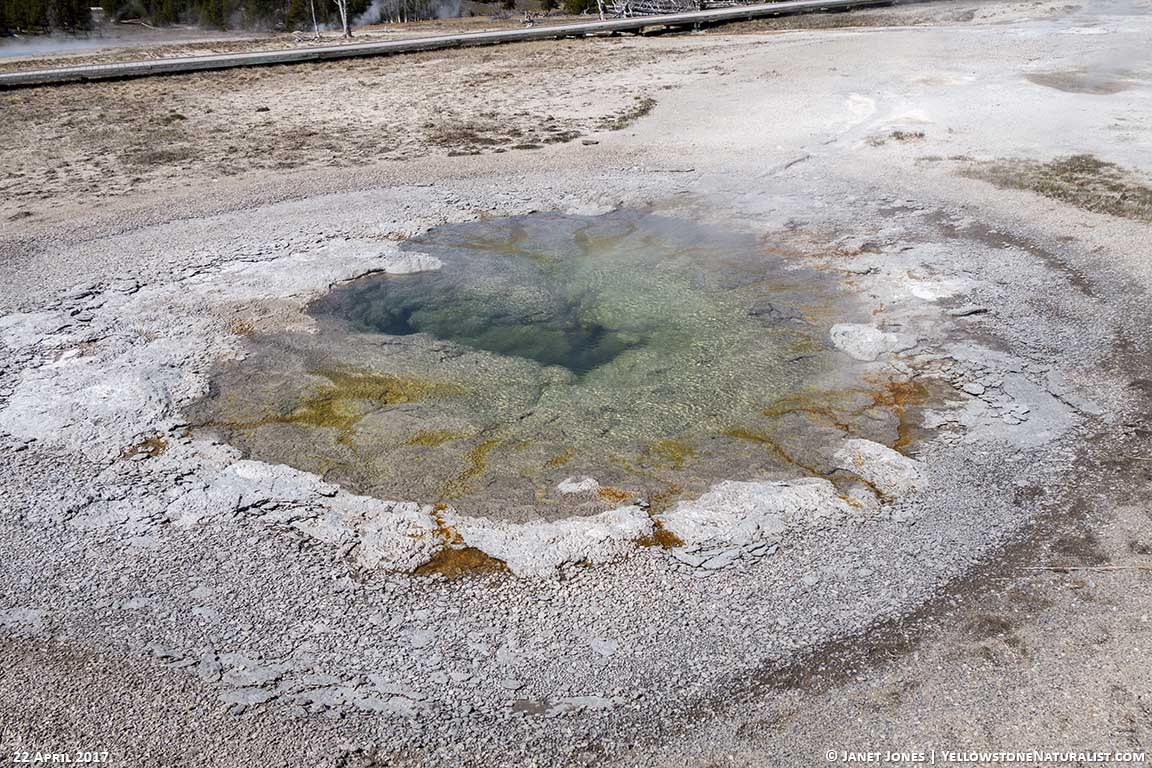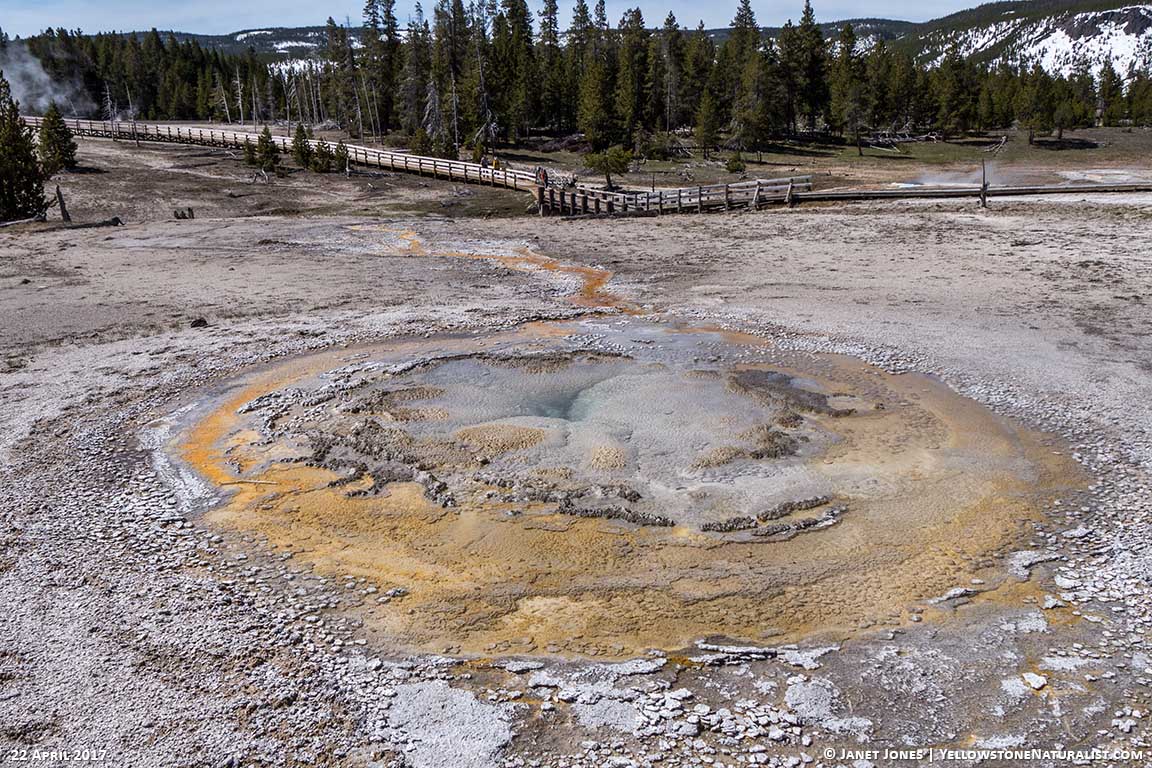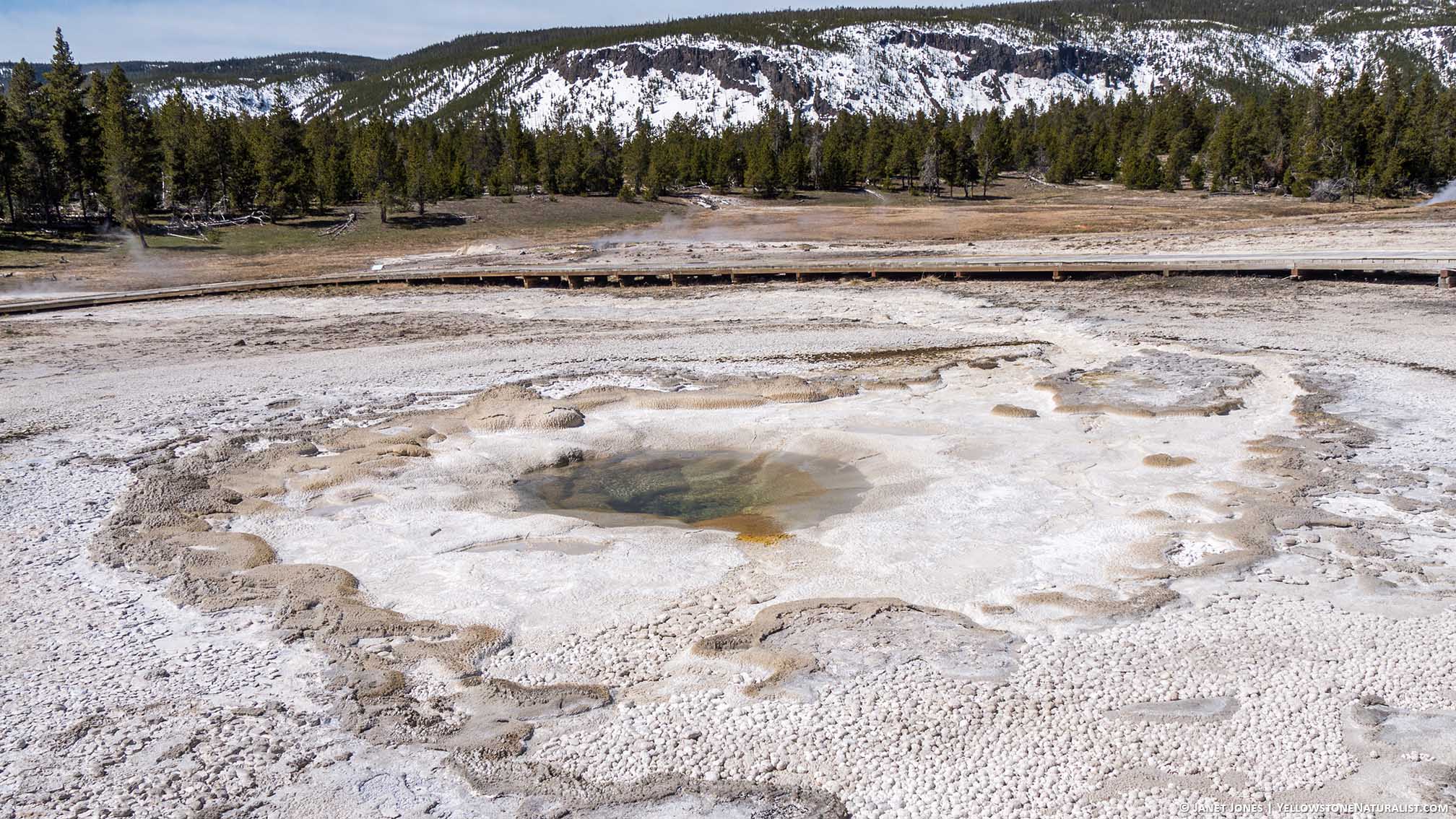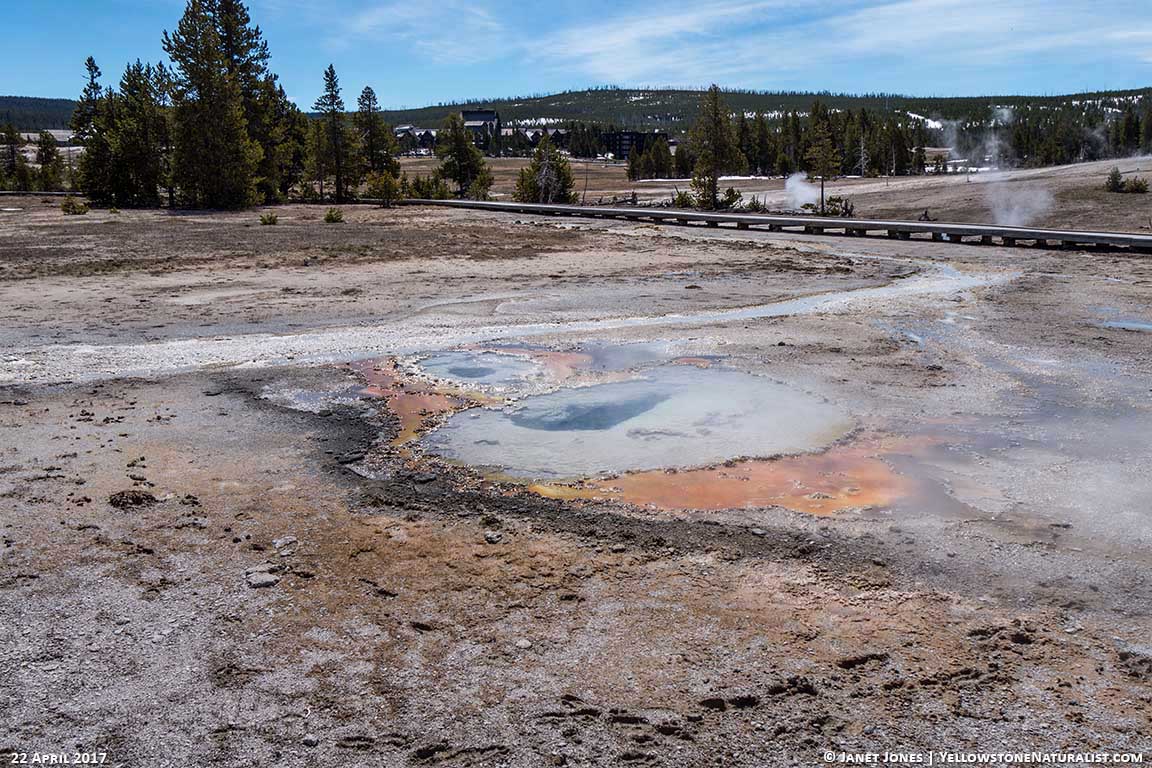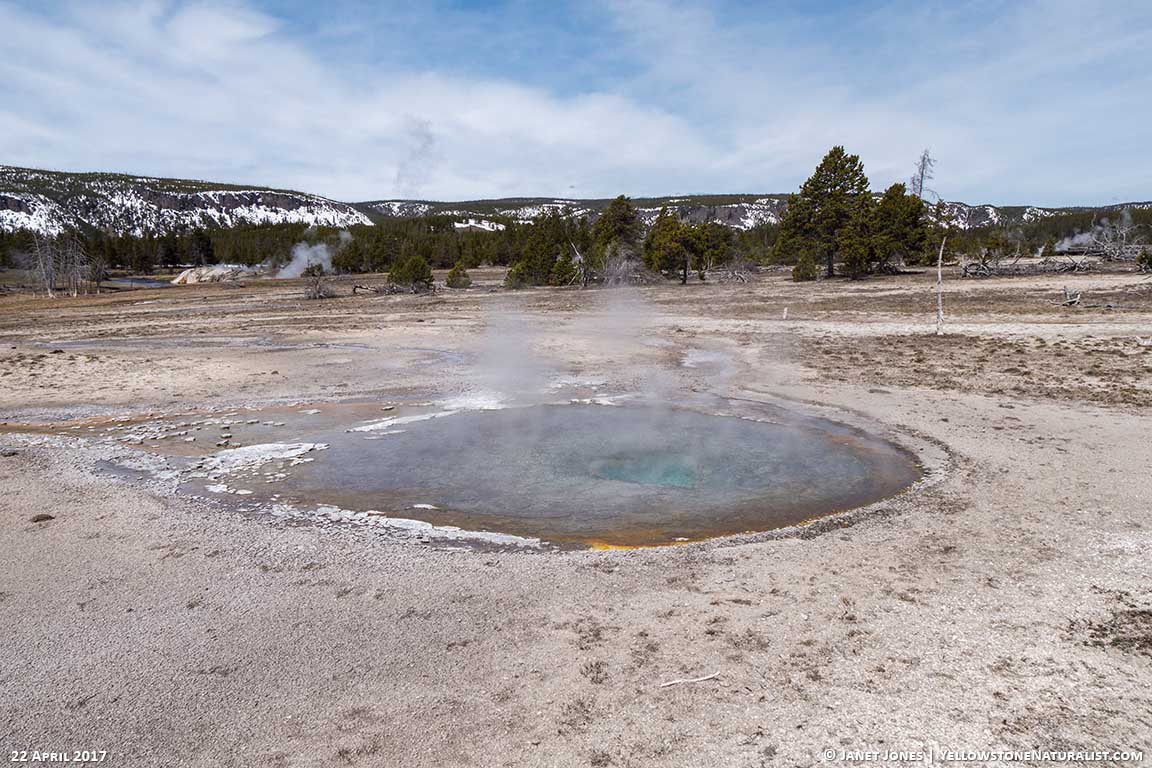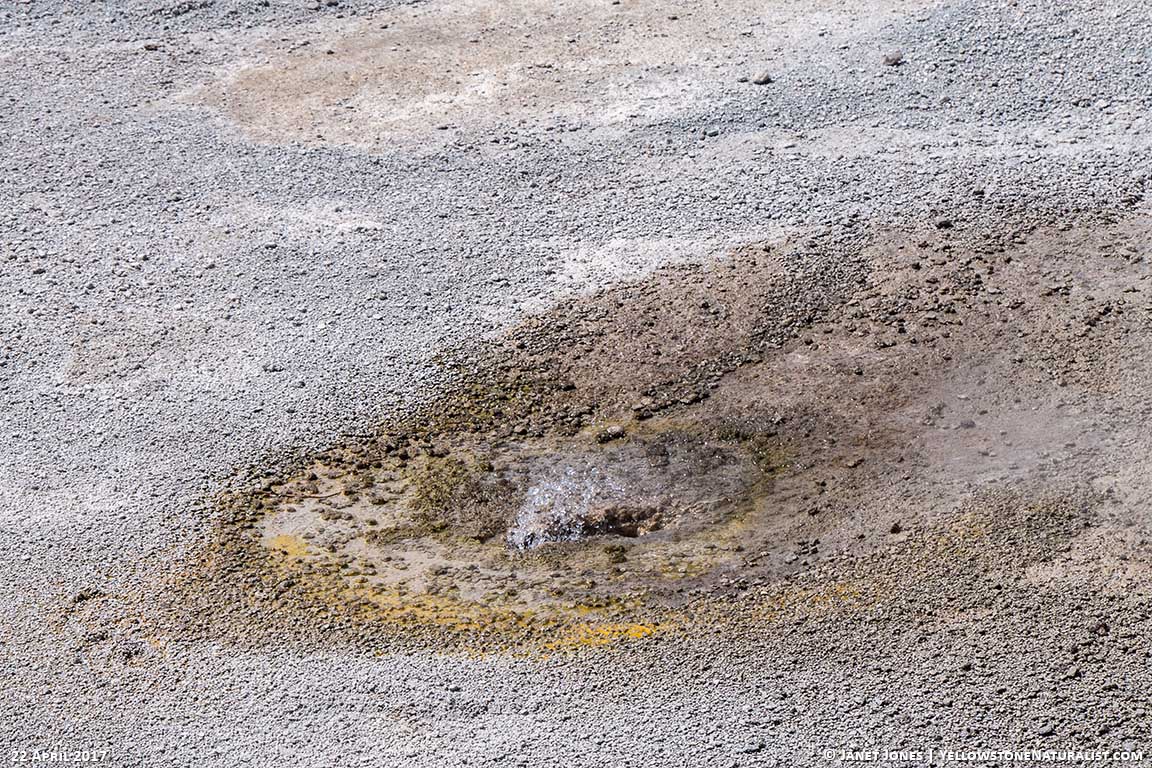Sawmill Geyser is taking a break
As the summer 2017 season in Yellowstone starts to bring in more reports, there are some changes happening in the Sawmill Group.
This post contains affiliate links. That means that if you follow a link and make a purchase, I receive a small
portion of that purchase at no extra cost to you.
WHERE ARE THEY AND WHICH ONES ARE THEY? The Sawmill Group of thermal features is located near Grand Geyser. T. Scott Bryan’s book (recommended) refers to this as the Sawmill Geyser Complex. His Sawmill Group includes more thermal features. When you’re new to the geysers, all of this can be a bit confusing, though it makes perfect sense once you get your bearings.
Since most of the time on the boardwalk, I hear the Sawmill Group referred to as just the smaller interconnected thermal features, I am using the boardwalk term for discussion here. That means the group includes: Sawmill Geyser, Penta Geyser, Churn Geyser, Oval Spring, Spasmodic Geyser, Tardy Geyser, Uncertain Geyser, Twilight Spring, Old Tardy Geyser and Slurp Geyser and “Nifty Geyser”.
Normally we see either hardly a drop of water in sight (during a “deep drain”) or quite a few geysers are active. Most often, that’s Sawmill Geyser. The whole group can behave in a couple of ways: one where Sawmill Geyser takes charge (Sawmill mode), or another where Penta Geyser and Churn Geyser are seen (Penta-Churn mode)
But maybe this is a third way this group can behave where Spasmodic Geyser is in charge of things – or at least that’s my current theory. We’d need many more times like this to tell for certain, but it’s good to pay attention to exactly what’s happening when things change and take notes.
WHAT’S DIFFERENT?
Walking up, the most unusual thing was seeing microbes growing in vents partially full of water or overflowing with water where microbes usually aren’t seen.
Pretty, but unusual.
Sawmill Geyser hasn’t been seen in eruption for quite some time. When this all started really isn’t known, but perhaps sometime around January or February. There are data loggers on at least some of these geysers. Will Boekel (who has a research permit for these loggers) says Sawmill was going strong in November and showed no abnormalities in behavior in December when the loggers filled. From December on, we’ve had to rely on visuals from the Webcam and visitors to the geyser basin.
Spasmodic Geyser, though, has been quite active with as many as 19 small bubblers counted throughout its cycle. It’s been active enough to create quite the runoff channel that stays wet enough to support a nice colony of orange microbes.
Also, “Nifty Geyser” (a very small and often ignored geyser) is acting as a perpetual spouter as far as anyone can tell. It’s going all the time. It’s not clear what’s really considered “normal” for this tiny sput because it’s not clear if anyone has ever paid enough attention to it to know.
Tardy Geyser is continuously in overflow and occasionally either turns over the water or splashes up 8 inches or so.
Churn Geyser has had a nice small stream of nearly continuous bubbles every time I’ve seen it this spring (and taken the time to look) and is also continuously in overflow.
While there, I walked through with the group with the iPad to document this unusually quiet behavior. The thermal features in order in the video are:
- Belgian Spring
- Crystal Spring
- A UTF (Unnamed Thermal Feature) with Old Tardy’s crater behind it
- “Nifty Geyser” (quotation marks mean it’s an informal name)
- Oval Spring
- Spasmodic Geyser
- “Dog Bone”
- Penta
- Twilight Spring
- Sawmill Geyser
- Tardy Geyser (where I just missed a splash from it)
- Churn Geyser
Is this a sign of something larger happening?
Maybe – but doubtful. It could just be an energy shift which happens regularly in most of the geyser basins. Or perhaps it’s just that the groundwater tables are higher due to the heavy winter we’ve had.
Right now there are more questions than answers. But that’s why taking up Field Journaling as a hobby is really quite interesting.
- Could this be a mode where Spasmodic is in charge – something rarely seen?
- Is there enough output of water from Spasmodic, Tardy and Churn to equal the amount of water put out when Sawmill is in charge or when Penta and Churn are in charge?
- Does the water level rise and fall in other members of this group in conjunction with Spasmodic Geyser’s cycles?
- How long are the cycles of Spasmodic? And does it seem to erupt in the same way as before? Has anyone really ever taken close notes on its cycles before? And if so – are those observations available anywhere?
- With the heavier snow this year, are there changes seen elsewhere in Yellowstone that might be a reaction to more water in the system? If so, where? If not, why just this group or is there something we’ve missed?
Everyone looking at their notes and research shows that this type of thing in the Sawmill Group has occurred in the past and sometimes lasted for a short time or for up to a year. This is just a part of what Yellowstone is: lots of thermal change.
Nobody knows when this pause in activity from Sawmill, Penta or Churn will end. But most are confident the activity will start again at some point. Change, though, is always interesting and definitely something that triggers my curiosity when tracking the changes in the geyser basins.
More on this to come as time allows for field notes to become part of the field journal.
